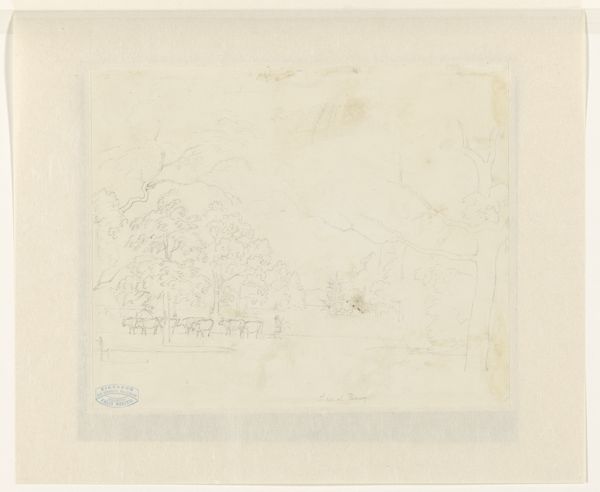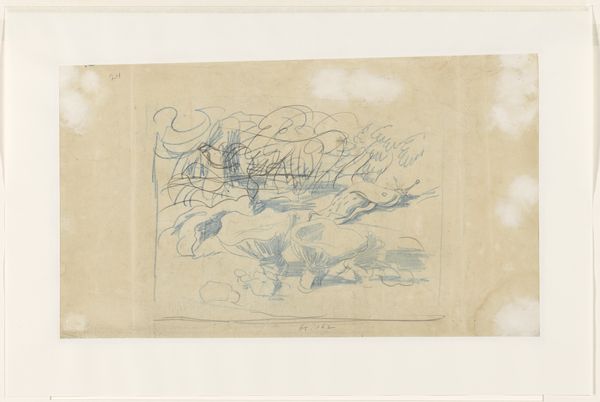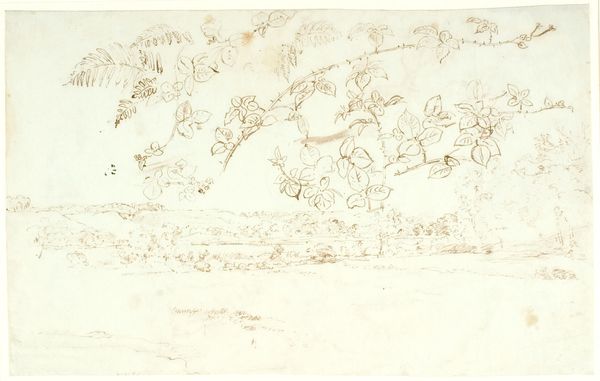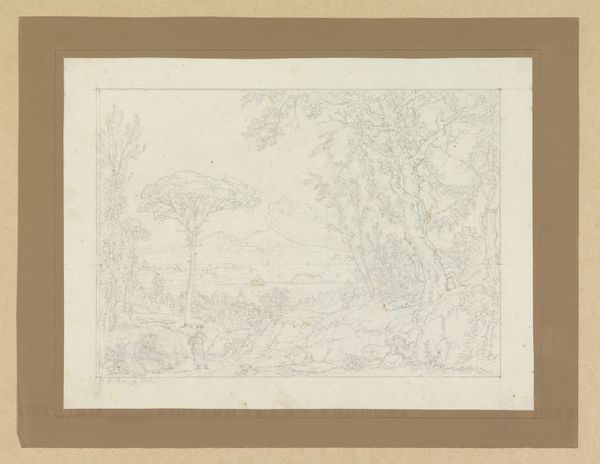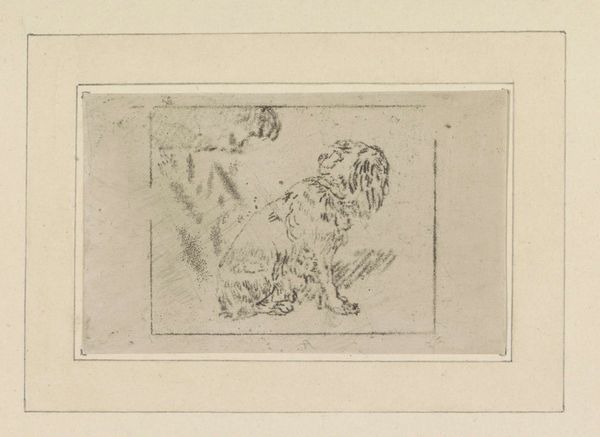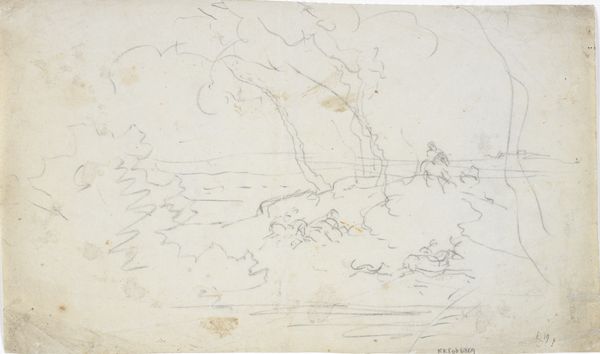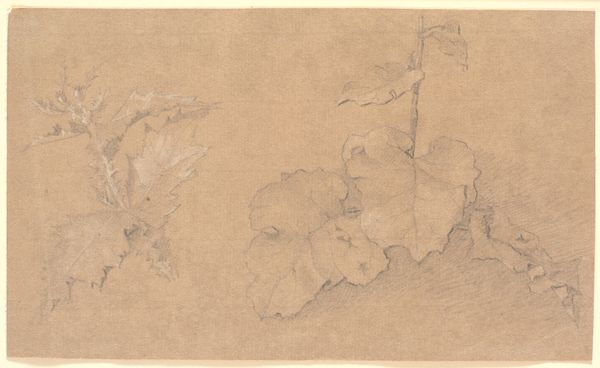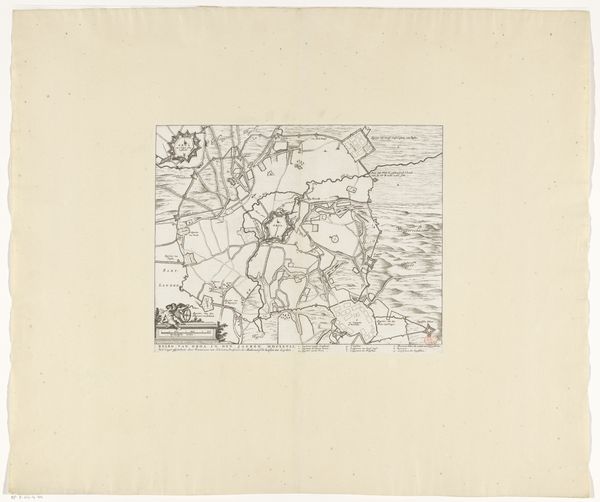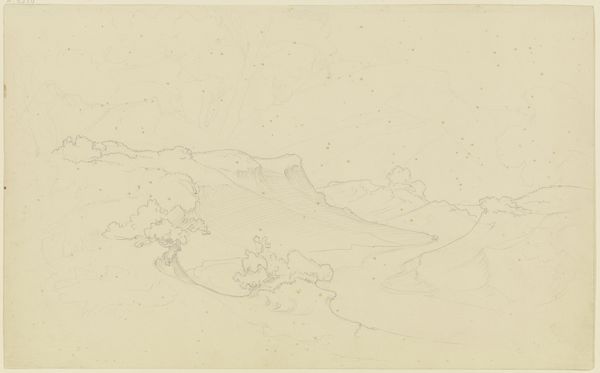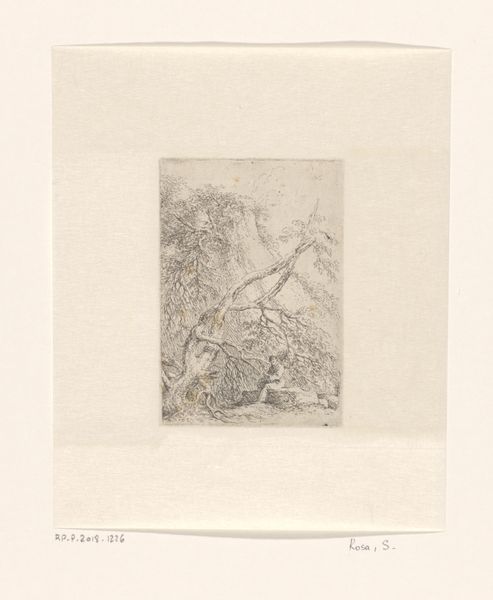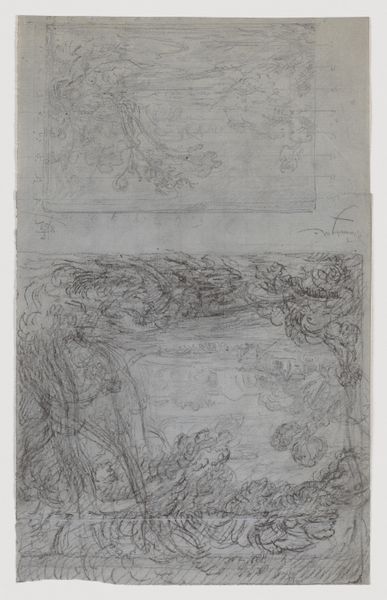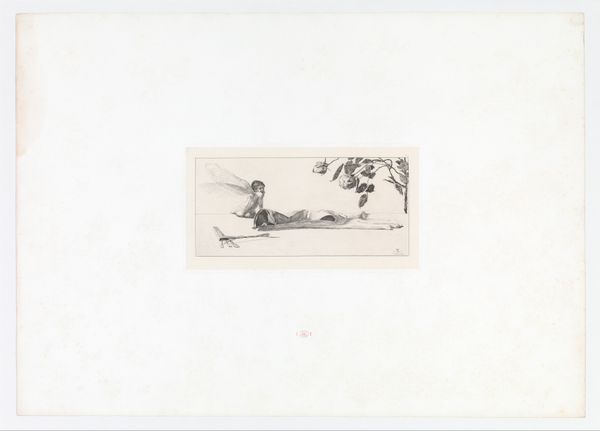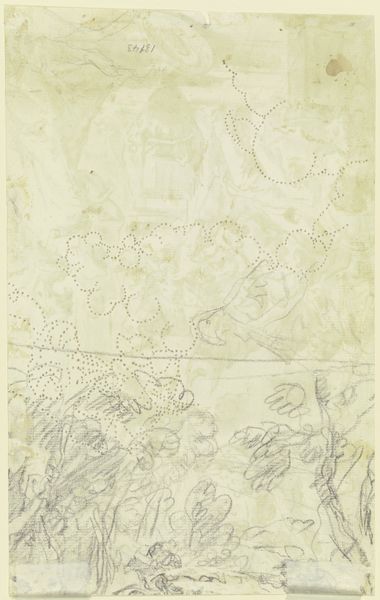
Southern landscape with a building and figures 1850 - 1863
0:00
0:00
Dimensions: sheet: 2 11/16 x 4 1/2 in. (6.9 x 11.4 cm)
Copyright: Public Domain
Curator: The ethereal quality immediately strikes me; it feels almost like a fleeting memory captured in pencil. Editor: And what a memory! Here we have Heinrich Dreber's "Southern landscape with a building and figures," created between 1850 and 1863. Currently residing at the Metropolitan Museum of Art, it presents a window into the idealized landscapes popular during that era. I’m curious about your read of the materials, Curator. Curator: Well, the evident simplicity of the pencil on paper invites contemplation of its function. Was this a preparatory sketch? A study of light and shadow? Or a self-sufficient artwork created by a specific grade of pencils available to the artist at the time? Perhaps, it speaks to the ready availability of paper in the 19th century; paper was cheaper than canvas allowing sketches such as these. Editor: Interesting points. Considering its context, drawings like these played a significant role in shaping perceptions of the landscape. They were circulated as prints, influencing tastes and fueling the Romantic movement's fascination with nature, which served very clear purposes back then! Didactic works reminding everyone how sublime and calming a proper vista was, but that such views came with the proper social hierarchy that granted access and protection to some people over others. Curator: Right, it hints at broader artistic production, how quickly an artwork would travel from one artist to another. Did its accessibility lead to a wider democratization of landscape aesthetics? Or, did printmaking encourage certain tastes, formats and materials? Editor: It raises crucial questions about the interplay between artistic expression and social constructs. The figures depicted seem to exist in harmony with their surroundings, reinforcing a sense of idyllic order, and of a certain access to leisure. The politics of how, where and when nature should be looked at, and for whose enjoyment! Curator: Absolutely, looking closer it does speak to a particular lifestyle, framed within a broader artistic infrastructure of production and consumption. The very making and circulation of art itself contributing to social formations. Editor: Examining Dreber’s drawing gives us insight into the period's values and artistic infrastructure, making it more than a picturesque landscape. Curator: Exactly. What first appeared as an ephemeral sketch turns out to be rather rich in its historical, material and cultural significance.
Comments
No comments
Be the first to comment and join the conversation on the ultimate creative platform.
